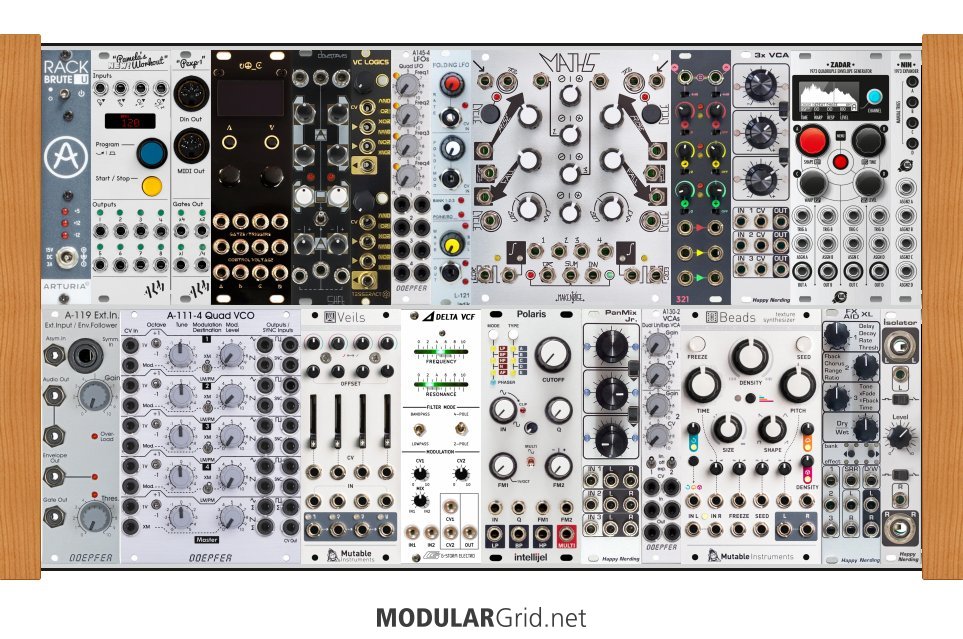Banged on it. Now, if you've got enough external devices, this should work quite well.

This is sort of upside-down from how I normally set things up, but I also know that the Arturia P/S likes to be in that upper-left corner. So the top row is the "control/modulation" row and the bottom is the voicing. Also, the width was wrong; Arturia's user notes state that the Rackbrutes are 88 hp, and that also opened up a couple of neat possibilities.
Top row: P/S, then this is where the Pam's modules wound up. To up your "variable module" game, the Disting went away, to be replaced by an Ornament&crime, which can serve as loads of different things...especially for that top row. After that is a dual window comparator...this is a generative MUST, as comparators allow you to pick off gates from LFOs and the like. And with this being a window comparator, you'll get more than just a single threshold-crossing for each incoming signal. After this is yet another useful thing, Tesseract's VC Logic...which sounds pretty much like what it is: two logic gates with CVable mode selection. Then there's a quad LFO for free-running LFO signals x 4, followed by an interesting Ladik LFO which has CV over rate AND wavefolding...yeah, you can screw with the LFO waveform! Maths is next, then you have a Frap 321 and a 3xVCA for modulation manipulation. Last, for envelopes, there's a Zadar with a Nin expander.
Bottom row: Big changes here. First off, the Doepfer A-119 allows a mono signal into the system AND extracts the envelope, sending that CV to a separate jack. You also get a gate when the level crosses your set threshold, which also can serve as a third comparator in a pinch. The single Plaits is now replaced with a Doepfer A-111-4 Quad VCO, giving you much more than you could get from a single VCO, it being Plaits notwithstanding. A Veils follows this to give you CV over amplitude plus VCO mixing. I swapped the Doepfer LPF for something MUCH more nifty, G-Storm's clone of the Korg Delta/Poly-61 VCF...which offers both LP and BP modes in your choice of 2- or 4-pole topology. The Polaris is next, with a PanMix jr. following that to serve as a manual mixer for your filter outs as well as providing stereo panning over those. The PanMix feeds a dual VCA for stereo mix level control, then it's on to the Beads, then an FX Aid XL takes that output and applies FX before the signal path hits the Isolator, which gives you transformer isolation on your outputs to help with noise/crud issues AND to give you a pair of transformers which you can "hit" a little hard to get some nice, euphonious saturation.
The big problem here is that, if this is supposed to be a generative system, it's a little "tight". I was able to add enough modulators and pick-offs to help with that, though. But this would really turn out better if I didn't have the Rackbrute constraint to work against. That's really the big stumbling block here; even putting the build into something slightly larger, like a Mantis, would give more working room to go with some larger/more ergonomic modules plus offer more room in general for additional functions. But for now, this is pretty serviceable.

